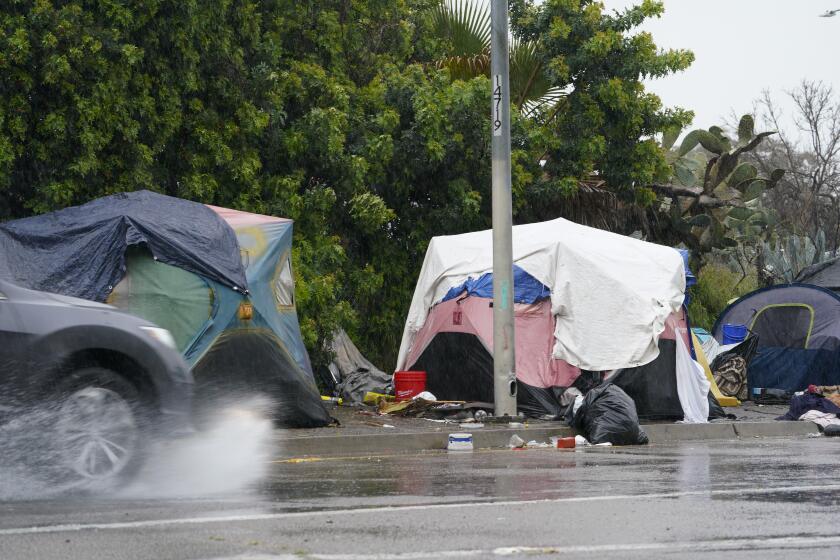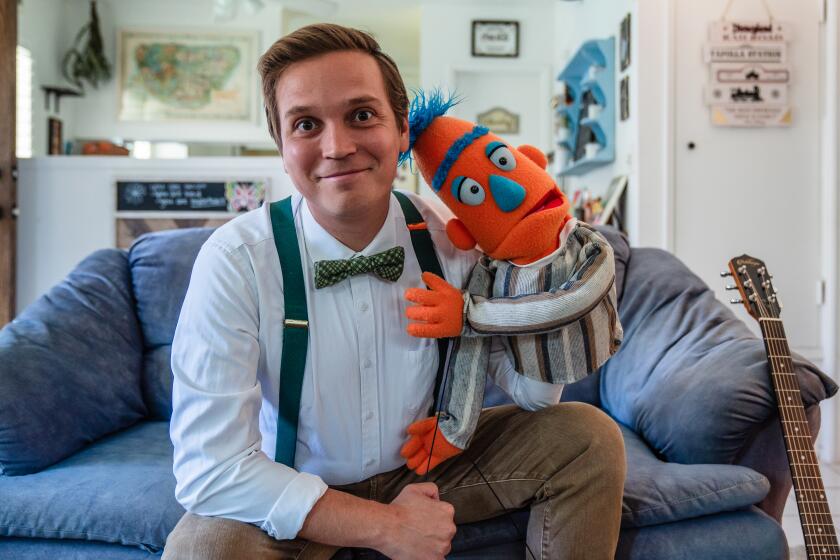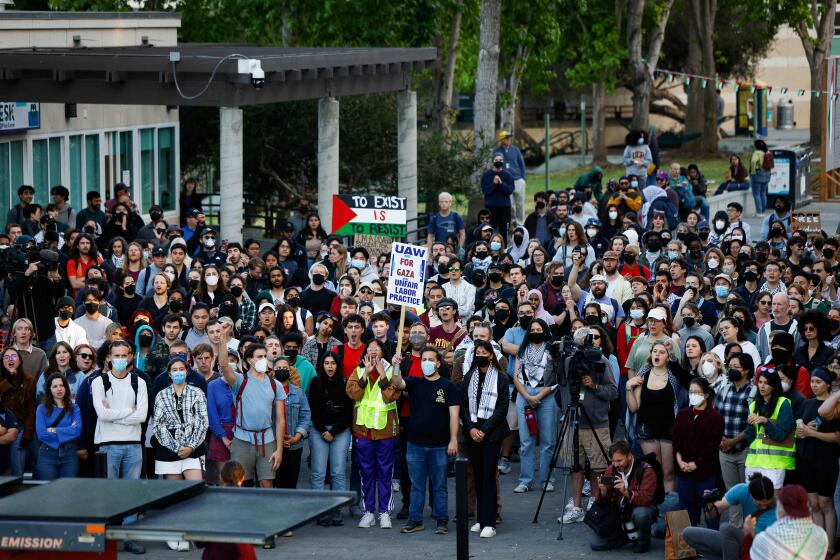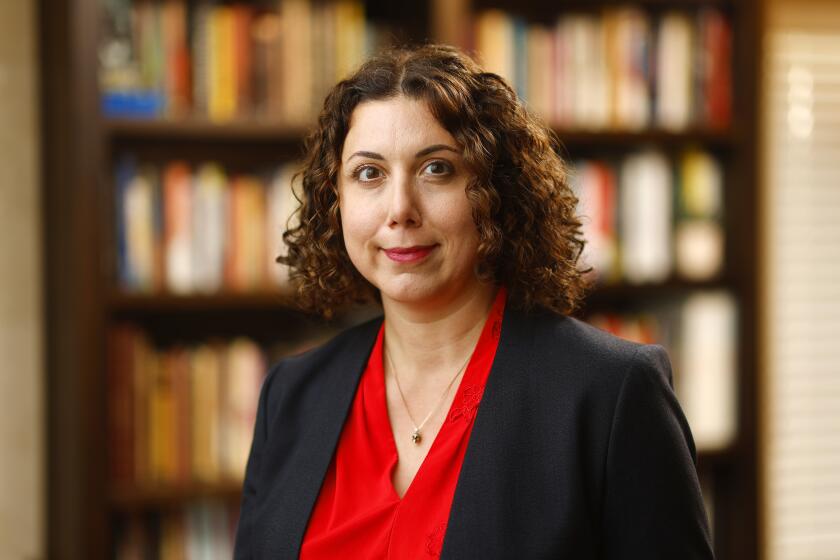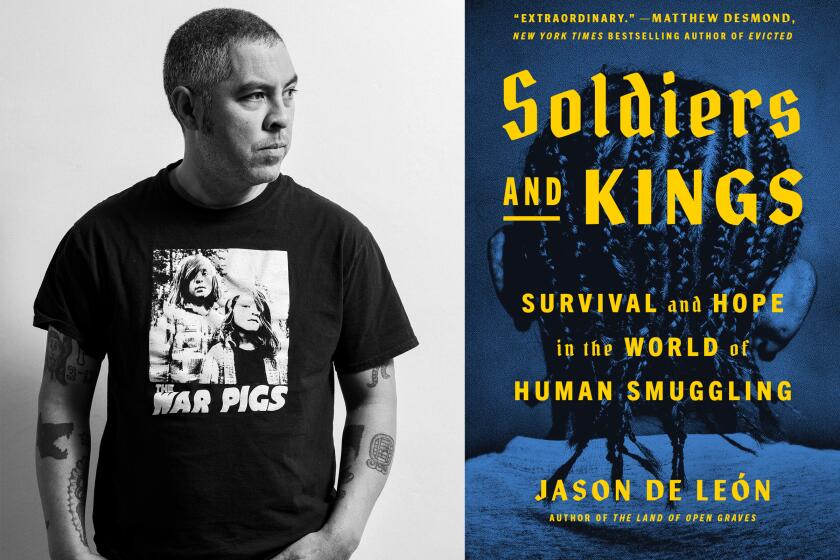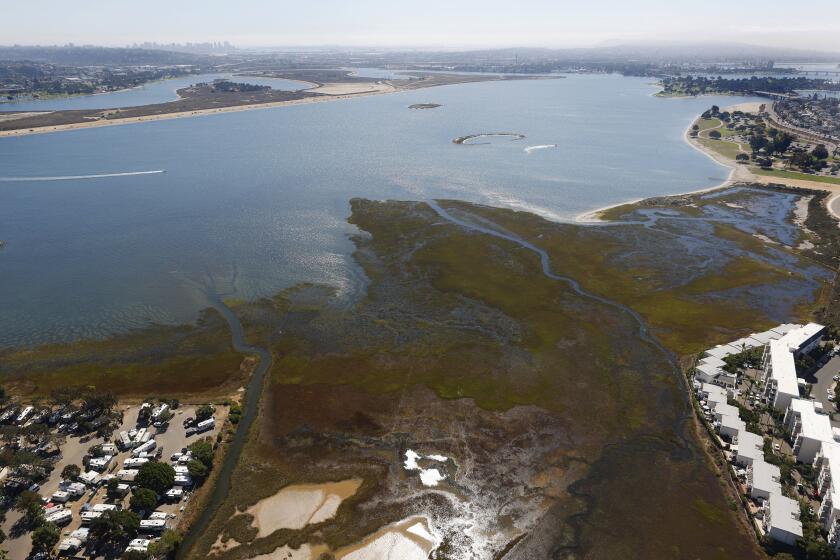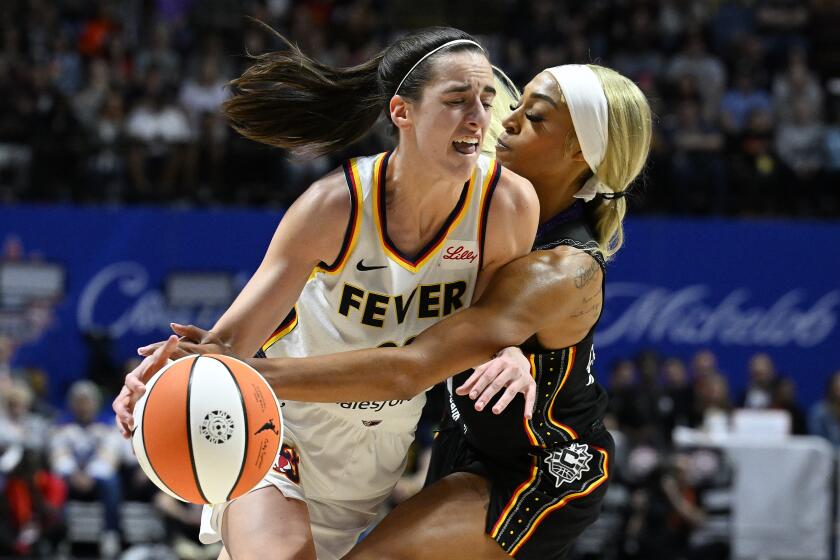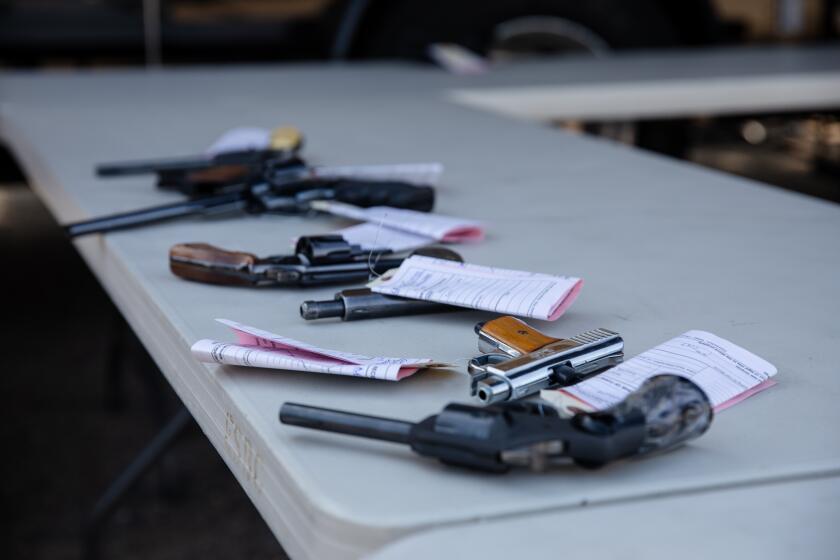San Diego women flew planes, were nurses, contributed during WWII, as local historian shares in lecture

Linda Canada, who volunteers with the San Diego History Center and was formerly the archivist for the Japanese American Historical Society of San Diego, presents “San Diego Women and Their Role in World War II” at the Mission Valley Library during Women’s History Month
For the last five years, volunteer and local historian Linda Canada has been researching what life was like in San Diego during and between World War I and World War II. Rather than focus on the weapons or the conflict, she wanted to dig into the realities of day-to-day life and how the wars contributed to those changes.
“I’m working on two new talks and … the first one up is women’s roles during World War II because some very different things happened to them during the wars, that kind of went away after the war was over,” she said in a phone interview last week. Her presentation, “San Diego Women and Their Role in World War II,” is at 1 p.m. Tuesday at the Mission Valley Library, presented by San Diego Oasis (an educational organization providing programming for adults 50 and older). In addition to her research in local archives, she was also able to interview people at senior living facilities who shared their experiences during the war.
For the last 25 years, Canada, a former lawyer, has worked with the San Diego History Center and the Japanese American Historical Society of San Diego in providing educational material and curating exhibits. She took some time to talk about what she learned, and will be sharing, during this Women’s History Month about the contributions of San Diego women during World War II. (This interview has been edited for length and clarity. )
Q: Can you set the scene for us? How would you describe the kind of area San Diego was before World War II? And what kinds of changes did the war bring to San Diego afterward?
A: Well, San Diego being a port city and having a naval presence, that was kind of always in the background here. So, as the war in Europe was gathering strength, there was some buildup of troops here in San Diego (mainly Navy, but some Army, as well). Also, we had the aircraft manufacturing plants, which were building planes for the war in Europe before the United States ever got involved. In the late ‘30s, we saw a build-up of people coming from the Midwest, from other parts of the country, to come work in the aircraft plants or to be stationed at the bases here. That led to a big housing crisis, which impacted the women because they were moving out here with their families and small kids. I kind of take off from there to say, ‘OK, from the housing crisis, and then getting into the war in the Pacific, how did things change for women who were there?’ So, I talk about how things changed for women who were staying at home and taking care of kids, and how things changed for the women who went to work during the World War II era.
Q: In general, what were women’s lives like in San Diego during that time? What were some of the local attitudes and perceptions about women in social settings, in the workforce, at home, at school, in the military?
A: To generalize, the attitude would be of males toward women, which is that they belong in the home, taking care of the babies. That was their role, and when there was such a shortage of labor, all of a sudden (one of my slides is an ad in the paper, which the title is ‘Should Your Wife Take a War Job?’) men had to face the fact that their women were needed in other roles than just being in the home. That was a big change during this period. Unfortunately, things changed back after the war and of the people who were unemployed at the end of the war, 95 percent were women who had worked in the war industries.
Q: In the information from the San Diego Public Library about your talk, there’s mention of married women and single women. What were some typical differences in social expectations and lived experiences between single and married women during this time?
A: With the single women being here and wanting to talk part in the war effort themselves, they went into either volunteer positions or into paid positions to help out with the war effort. Sometimes, that put them in more close contact with males than they had been in the past. Some of these women were already college graduates, and they were helping out in different ways. I tell one story about a woman who had been working at Consolidated Aircraft Corporation and she kind of got bored with the work. She was an office worker and she heard through a friend that a bookstore was for sale, so she went and bought the bookstore that was downtown (on Broadway and Ninth Avenue, or something). A lot of the sailors came in and the off-duty military came in, and one of the guys came up to the counter and exposed himself to her. That was something you don’t expect when you’re running a bookstore. The other sailors tackled him and held him until the police arrived. So, there was that aspect of there being all of these men in town, all riled up, military, but there was a little bit to be scared about. For my Japanese American friends, the women who were in that 20s age range, who weren’t married yet, said their parents wouldn’t let them go out at night because there was a very distinct, anti-Japanese sentiment before the people here were sent away to the incarceration camps. So, the parents thought it was dangerous for their young women to go out at night.
Q: That leads to one of my next questions: What were the differences in the experiences of White women versus non-White women during this employment boom? Particularly Black women, Latinas, and notably Japanese American women?
A: For the Japanese American women, it’s kind of an interesting story because they were all cleared out of San Diego as of April 1942 and they were taken to these incarceration camps out in the desert. Now, it was OK for Japanese Americans to be in other parts of the United States; they couldn’t be along the coast where the military zones were. So, some women were able to get work in vegetable canneries, or even some of the work came into the camps. One of the people I’ve talked with, she worked on creating the burlap-and-chicken feather nets that were camouflage nets that went over the Consolidated Aircraft plants so that any Japanese bombers couldn’t spot it from the air.
Q: With women experiencing more independence and agency during this time, how was this shift being received socially and materially, both by the women themselves and the men who stayed behind?
A: The irony is that, as I said about the unemployment figures, women really went back into the home. For the most part, a lot of them just stopped working; their husbands wanted them to stop working, their role was in the home. So, the whole women’s movement didn’t really kick in again until, I think, the ‘70s. There were women who said they worked during the war, but then they went back and took care of their kids, or joined a woman’s club, or their church. They just went back to what they were.
Q: Was there any desire to continue working, or was that too much, with the expectations in the home?
A: In all the women that I have interviewed for this talk and the reading that I’ve done, I really haven’t found strong evidence of that. A few did stay around. For example, there’s a woman who just died last December, she was 104 when she died. [Jean Landis] was born in El Cajon and when she graduated from college, she [taught at Grossmont High School before] she went and got a pilot’s license. Then, the war broke out here, Dec. 7 happened [the attack on Pearl Harbor in 1941], so she was able to go to one of the war agencies (Women Airforce Service Pilots) and her job was to ferry planes between the manufacturing plants on the West Coast and fly them to the East Coast where they would go on liberty ships to go over to Europe. Then, when she was there on the East Coast, she took a different kind of plane and flew it back to the West Coast so that it could be shipped over to the Japanese field of combat. She did this during the war. Other women, some of them died while they were doing it. They got no special benefits, they got nothing. It wasn’t until, I think, 1977 that they were first recognized and then these women pilots got Congressional Gold Medals around 2010, but it was too late for most of them. For this particular woman, because she had a college education already, when she was done flying, she came back and went back to college and got an advanced degree. She was a physical education teacher, and her last teaching role was at San Diego State.
Q: What are some vestiges of this status change for women that began during World War II, that we can still see today?
A: I kind of had one in my own family. My mother, when she wanted to get married around 1948 right after the war, her father wouldn’t let her get married to my dad until she had some kind of skill that she could rely on to be able to support herself if that marriage didn’t work out. As it turned out, it didn’t work out, so she went to work as something called a key punch operator. Those were these big, huge machines that were IBM machines, and they typed into a keyboard. What came out was a card that was about the size of a commercial check. These were then sorted and fed into the computer, so this was work that started during World War II and she picked it up right after World War II. She worked in that field all the way through until that whole thing went away. Then, she was typing directly into computers, they weren’t doing the cards anymore. She spanned that World War II era into the modern computer era with the type of work that she did. What’s more interesting is that my grandmother, his wife, did not work outside of the home at all, ever. With his two daughters, he wanted to be sure both of them had some kind of a field they could fall back on.
Q: Is there any information you’ve learned during your preparation and research that surprised you?
A: One of the things that I was really interested in, there was a guy who wrote a dissertation on wartime changes at San Diego High School [Shragge, Abraham. “A New Federal City: San Diego During World War II.” Pacific Historical Review, vol. 63, issue 3, August 1994.]. I was really interested in how the women teachers at the high school really stepped up to make sure that the students were getting the information they needed. When the men teachers went away to war, the women who had been teaching PE, homemaking, that kind of thing, stepped up and got themselves ready to teach math and science. They also changed the curriculum so that what the students were learning were the types of calculations they would be making if they went into the military, or if they were working in the aircraft plants. There were some changes that took place at the high school that the women were very much involved in.
Get Essential San Diego, weekday mornings
Get top headlines from the Union-Tribune in your inbox weekday mornings, including top news, local, sports, business, entertainment and opinion.
You may occasionally receive promotional content from the San Diego Union-Tribune.

